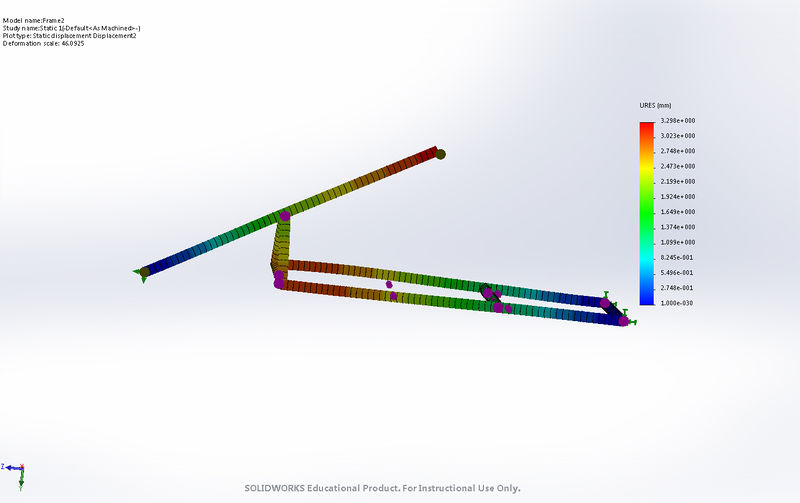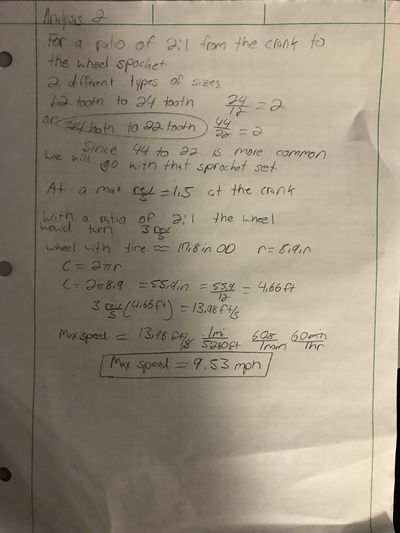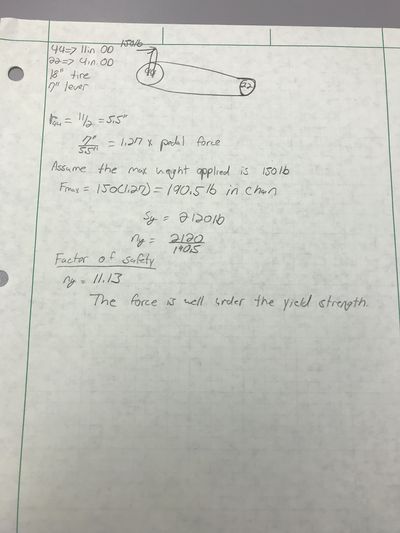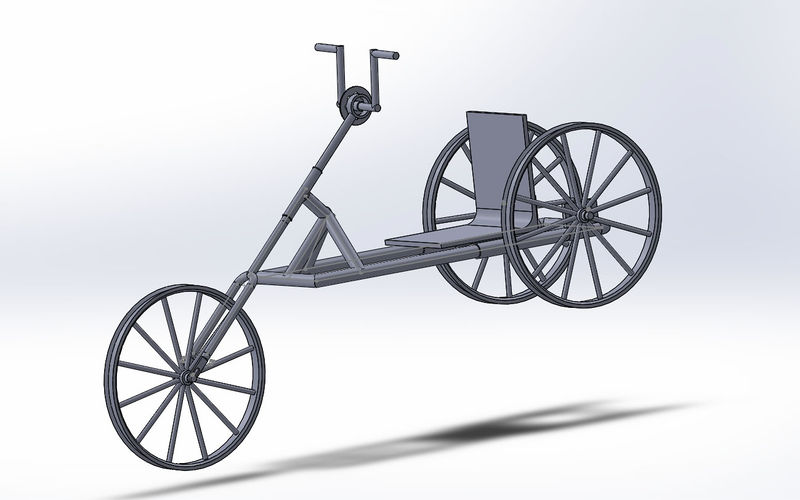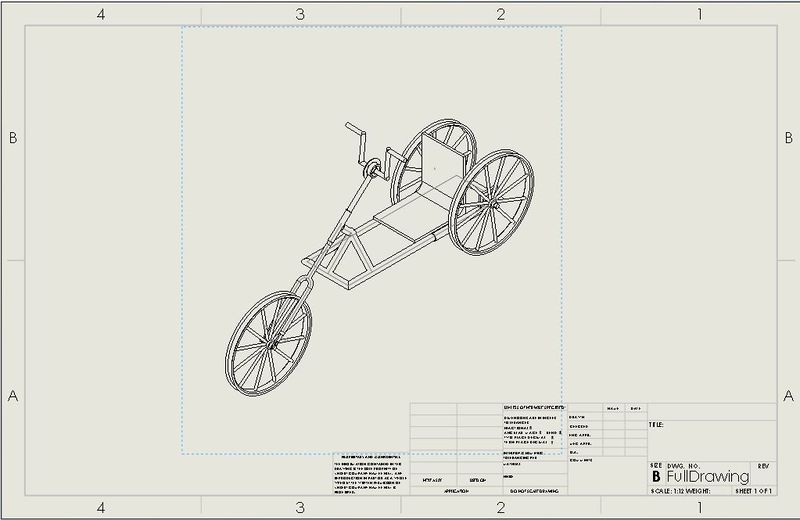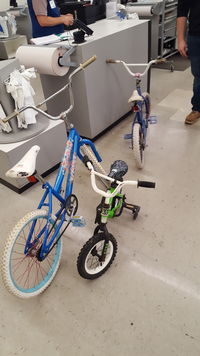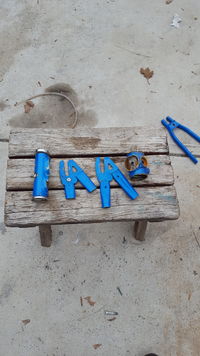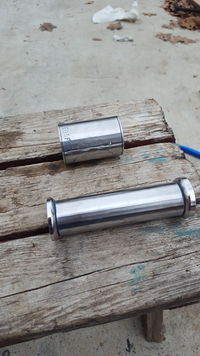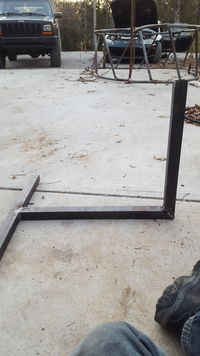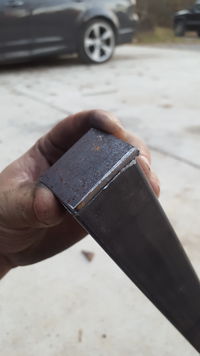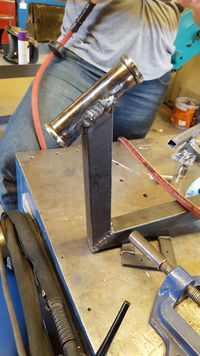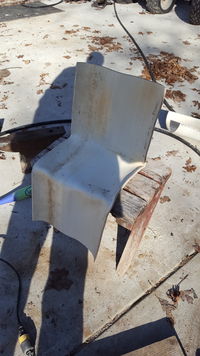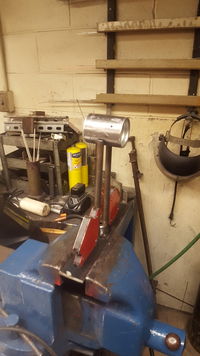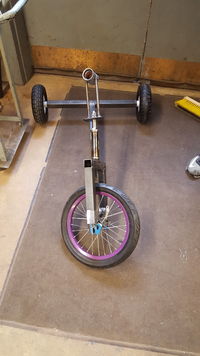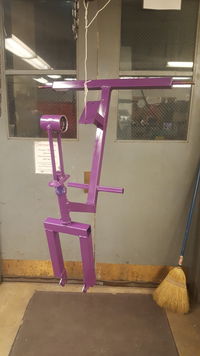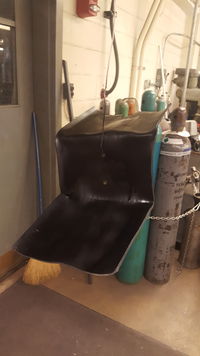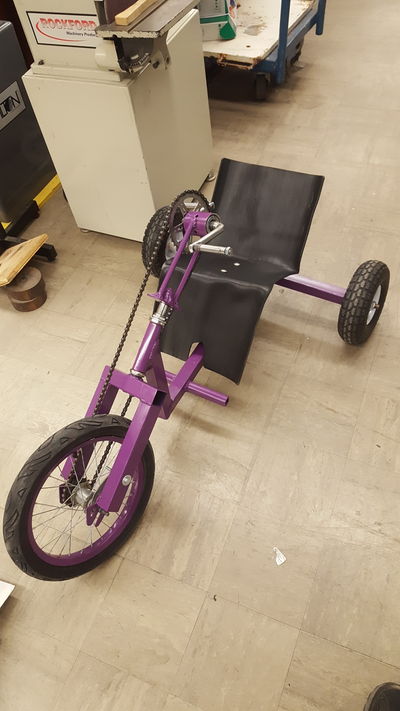Advanced Mobility Toy
Abstract
Our goal is to design and construct a bicycle-like vehicle for a child or individual with lower body immobility. We aim to stay as close to a regular bicycle or hand powered device as possible to allow the users to feel less scrutinized when using the vehicle.
Team members
Jonus Goldston
Cody Chattin
Jeremiah DeWitt
Mohammed Almajdi
Matt Tinker
Problem Statement/overview of the need
Children with lower body immobility have very limited options regarding effective man powered vehicles. Our goal is to design a vehicle that is easily propelled by a child or individual with little to no leg movement. The most important goal of the device is to provide children with an opportunity to synchronize different brain functions that would otherwise be difficult to do with other toys.
Design Specifications
The device must be light enough to operate without the assistance of the user’s legs, but must also maintain rigidity and support the weight of the individual. Depending on the design, the vehicle may benefit from different lengths; most importantly, wheel position relative to the user’s center of mass.
Background research
Similar products to ours exist, but they all have distinct separation between models for handicap individuals and users with full mobility. Our goal is to create a hybrid that will be usable and enjoyable for users of full mobility and limited mobility. Kids with limited mobility will be able to use the same bicycle type vehicles as their fully mobile friends and may temporarily forget their handicap.
Our frame is inspired by different frame designs we found, while trying to maintain simplicity to cut weight.
Conceptual Design
Design Concept 1
- Utilized a gearing design called a ”Reciprocating Rack and Pinion”
- Horizontal movement is converted to rotational movement
- By rocking their weight back and forth, the user can propel the device
- A gear train will be used in the stages between the RRP system and the axle to improve efficiency and ease of use
https://www.youtube.com/watch?v=ScB6Wd4r9Jc
Design Concept 2
- This design utilizes angular movement of the user’s center of mass
- By rotating about the front wheel, the normal component of angular acceleration is used to accelerate the vehicle forward
- The vehicle is steered by a free rotating caster wheel mounted under the back seat
Design Concept 3
- This design utilized a hand pedal system to power the steered
- The vehicle is steered by rotating the front column and turning the entire drive system
- This design uses a driving system similar to a bicycle
- This design provides the best path to our goal of having a "normal" device that can be operated by individuals with lower body immobility.
Evaluate concepts/select candidate
After evaluating the costs and estimating the difficulty in building the finished product in all of the concepts we have decided to fabricate a hand crank tri-cycle. This design presents a moderate difficulty fabrication process, but has the most simple driving mechanism. The majority of the difficulty in the build is in pure fabrication, which is easier to overcome as opposed to a tedious or inefficient powering system. The build should be relatively cheap as we can salvage most of the parts from scrap steel in the shop and old bicycles. The drive system will likely come straight off of an old bicycle, but it will have to be modified to fit our specifications. Our main goal with the hand cranked vehicle will be to keep a high efficiency and to make the vehicle usable for a variety of children, including those with lower body immobilities. The bike will accommodate needs of these children while maintaining a "fun" image and enjoyable use.
Detailed Design
Our design includes a simple three wheel system. The frame will be constructed of simple, cheap steel tubing. The vehicle will use a chain driven power system, similar to a bicycle, that is cranked or pedaled by the user's hands. The vehicle in total will be 6 feet in length and approximately 24 inches in width.
Description of selected design
When designing the look of our vehicle, we tried to balance the design around 3 main points; keeping the vehicle efficient, inexpensive, and fun. We didn't want the vehicle to look like a modified wheelchair. That is where the long slender look comes into play. The pedaling system will use pedals that are fixed in the same angular position to allow the individual to use more body momentum to power the device.
Detailed description of selected design
Analysis
Engineering analysis 1
Weight Analysis
- The frame will be built out of 1.25" round steel tubing. The tube will have .120" wall thickness.
- Approximately 16 feet of tubing will be used resulting in a weight of 23 lbs for the frame.
- After factoring in weight for wheels, driving system, pedals, and seat the goal weight is to be less than 45 lbs.
Engineering analysis 2
Stress Analysis of Frame
Engineering analysis 3
Gear ratio/velocity analysis of sprocket/chain system
- Assumption that a human can generate 1.5 pedal rotations per second
- Using common bicycle sprocket sets, ratio of wheel rotation to pedal rotation is 2:1
- Tire diameter is approximately 18 inches
- Max wheel rotation speed becomes 3 rotations per second
- After converting angular velocity to linear velocity, max speed of vehicle becomes 9.5 miles per hour
CAD Drawings
Bill of Materials
qty, item, description, source, part number, price

